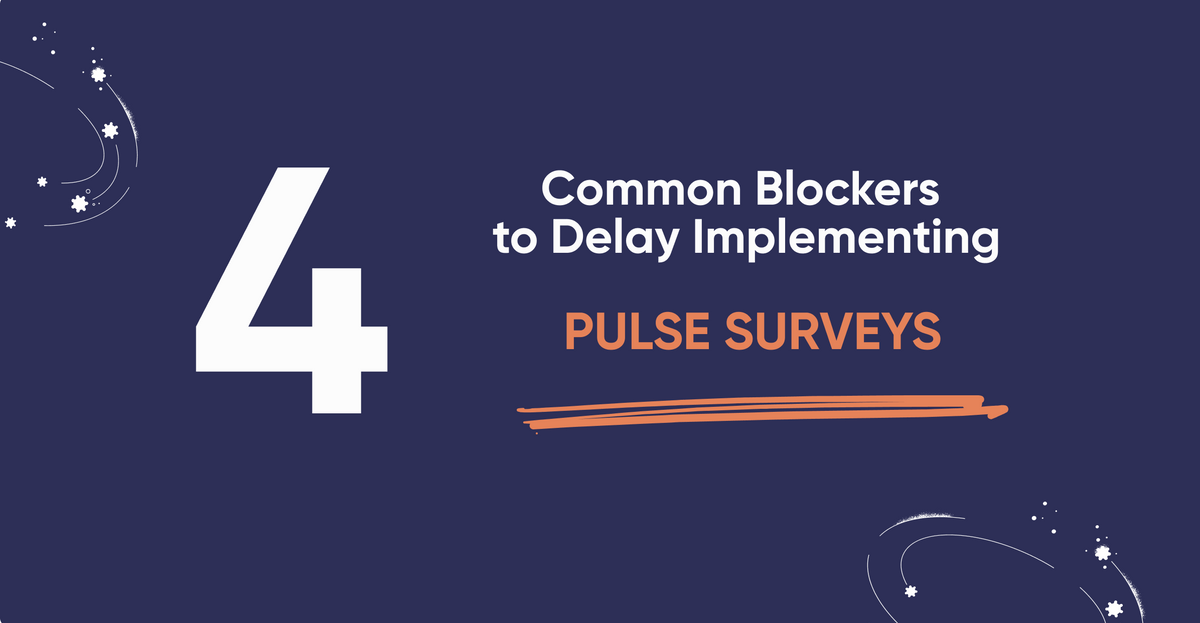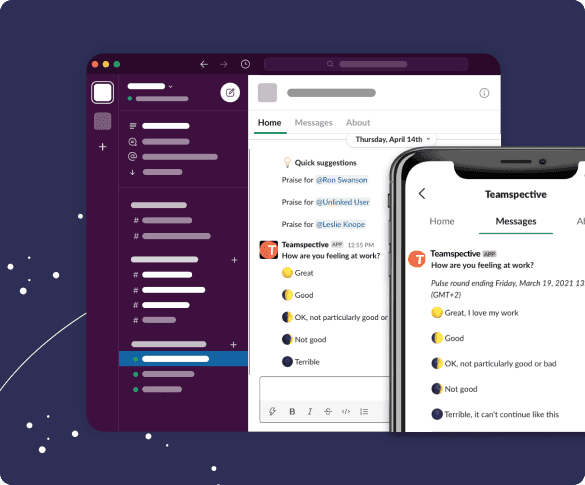Implementing pulse surveys may not seem to be an urgent thing to do, but without them great opportunities to boost employee engagement can be missed. Let’s explore together why companies of almost any size would benefit from pulse surveys.
What are pulse surveys?
Let’s make sure we are thinking about the same thing! Pulse surveys are quick, regular check-ins with employees to gauge how they're feeling about their work, manager, and company. They can be used to identify issues early, before they become bigger problems.
What exactly am I missing without pulse surveys?
1. Honest insights, even on sensitive topics
Talking about uncertainty, decreased motivation, insufficient support and other challenges at work has never been easy. Anonymous surveys help employees to be honest and surface the issues.
2. Opportunity to react fast and fix the issues before they escalate
We have seen examples of companies where 30% of employees reported significantly lower psychological safety already 2 months after the previous annual survey. More frequent (weekly or bi-weekly) pulse surveys create an opportunity to react quickly and develop action plans to address the issues earlier and easier. At the same time managers have an opportunity to monitor the trends and to act consciously.
3. Growth mindset in your teams
Creating an expectation of frequent measurement, discussions and improvements shifts employees towards a growth mindset. As a result, the feeling that everything can be improved with intentional efforts is created, and teams get motivated to work together to achieve desired results.
4. Empowering teams while reducing HR workload
Pulse surveys help you empower teams to discuss their own results and take responsibility for improving them. Companies who operate in this way become more agile than their competitors who adopt a strict top-down approach. In agile companies HR professionals have the opportunity to focus more of their time on a wider range of initiatives, including company-driven ones.
Given all these benefits, why is pulse survey implementation still often pushed back in priorities?
Here are 4 common blockers, and reasons why you should not be scared of them
1. "We already have our hands full with initiatives"
You might feel like you're already stretched thin with initiatives, but implementing a pulse survey doesn't have to be a huge effort. For example, Teamspective’s implementations require only one day of work over a period of two weeks: 1-2 hours to set up everything, an hour to train your team leaders, 1-2 hours for internal communication and 1-3 hours to follow up and support teams when they get their first results.
Besides this, regular pulse surveys allow every team, and especially leaders, to get insights and take action independently without HR involved. The benefits of pulse surveys - including increased engagement and improved performance - are too great to delay.
2. "Our leaders meet with teams every week"
Team meetings are important, but it's not the same as getting feedback via pulse surveys. No matter how much of a supportive environment you believe you have created, team meetings can still feel intimidating for some employees. By allowing anonymous feedback, it takes the pressure off your employees that have good ideas but struggle to speak up during meetings, whether from discomfort or shyness.
3. "We already do annual employee surveys"
Annual employee surveys are valuable, but they only give you a snapshot of how your employees are feeling at one point in time. Pulse surveys, on the other hand, give you a real-time view of employee engagement and allow you to identify and address issues quickly.
With Teamspective pulse surveys we've seen that over 25% of employees feel different just one month after responding to a survey. With annual surveys you may discover crucial changes only 11 months later, or in the worst case focus on initiatives that are not the most impactful ones.
4. "We don't have the budget"
You don't need a big budget to implement pulse surveys. Look at it this way: The average survey program costs €40 per staff member each year. It’s surely cheaper than the risk of low productivity, upset workers, stress-induced sick leaves and employee churn. Replacing just one employee can cost more than $15,000, and the impact is much greater when looking at the whole company.
The benefits of pulse surveys - including increased engagement and improved performance - are well worth the investment.
Final Thoughts
Implementing pulse surveys can be a valuable way to get feedback from employees and identify issues before they become bigger problems. The benefits are simply too great to ignore, no matter at what stage of growth your company is right now. If you're feeling overwhelmed by all the initiatives you have going on, start small with pulse surveys and gradually expand them over time.
At Teamspective, we’re ready to help your team implement pulse surveys, so you can start to reap the benefits within a week. Get in touch with us today to see how we can help.


